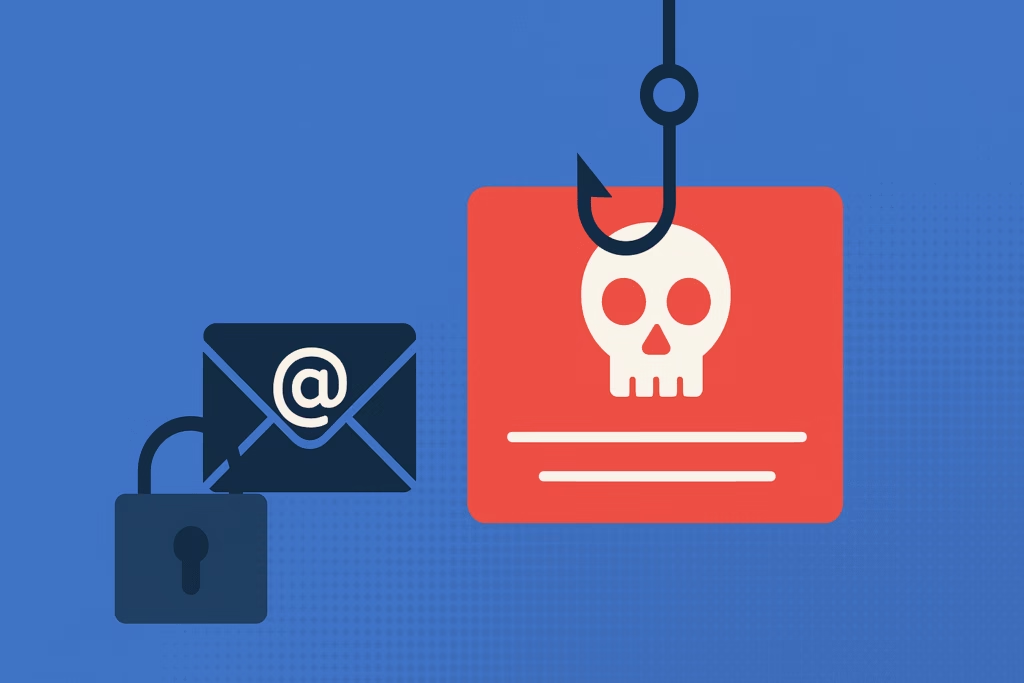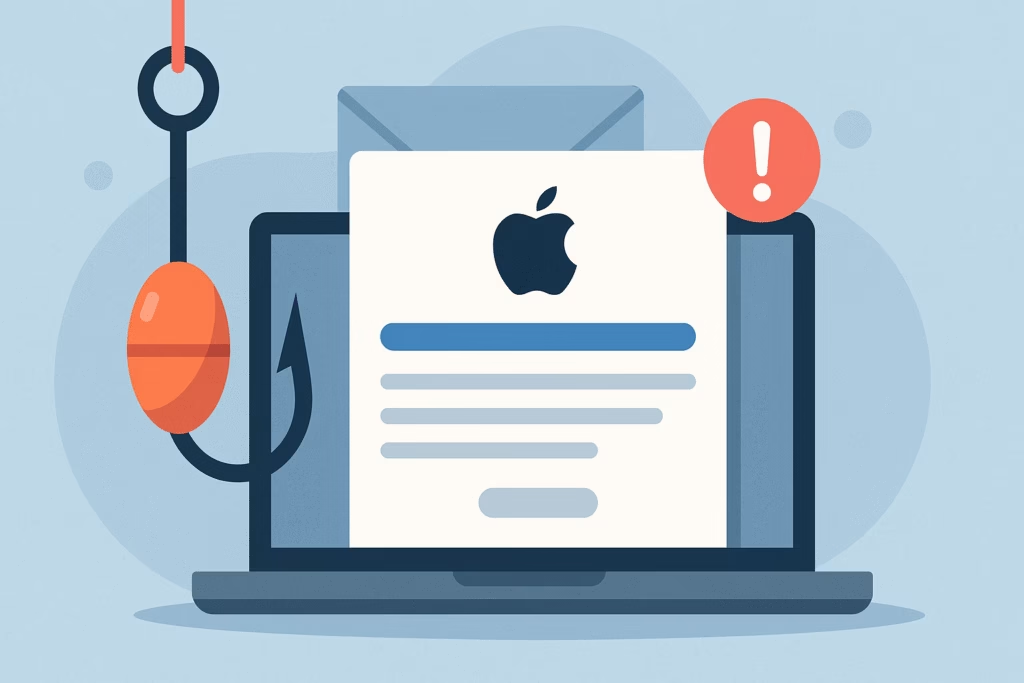
Chase Bank customers face an alarming reality: cybercriminals frequently impersonate this trusted financial institution to steal sensitive information through sophisticated phishing campaigns. With over 2.8 million fraud reports filed with the FTC in 2022, knowing how to properly report phishing emails has become essential for protecting yourself and helping authorities combat these crimes.
When you receive a suspicious email claiming to be from Chase, your response in the next few minutes can make the difference between a simple delete and becoming a victim of identity theft. This comprehensive guide walks you through the exact steps to report phishing emails to Chase Bank, helping you protect your finances while contributing to the fight against cybercrime.
Identifying Chase Bank Phishing Emails
Before reporting a phishing email, you need to confirm it’s actually fraudulent. Chase phishing emails typically exhibit several telltale signs that distinguish them from legitimate bank communications.
Common Red Flags in Chase Phishing Emails
- Generic greetings: Real Chase emails address you by your full name, not “Dear Customer” or “Dear Valued Client”
- Urgent language: Phrases like “Your account will be closed in 24 hours” or “Immediate action required”
- Suspicious sender addresses: Emails from domains other than chase.com (like chase-bank.net or chasesecurity.org)
- Grammar and spelling errors: Professional banks employ editors; obvious mistakes indicate fraud
- Unexpected attachments: Chase rarely sends account information via email attachments
- Requests for sensitive information: Chase will never ask for passwords, PINs, or Social Security numbers via email
According to the Federal Trade Commission, phishing emails often create false urgency to pressure victims into quick decisions without careful consideration.
Step-by-Step Guide to Report Chase Phishing Emails
Chase Bank provides multiple channels for reporting phishing attempts. Following these steps ensures your report reaches the appropriate security teams and contributes to their fraud prevention efforts.
Method 1: Forward to Chase’s Dedicated Phishing Email
This is the fastest and most direct way to report suspicious emails to Chase Bank’s security team.
- Do not click any links or download attachments in the suspicious email
- Forward the entire email (including headers) to: phishing@chase.com
- Include the original subject line to help Chase’s team categorize the threat
- Add a brief description in your forwarding message explaining when you received it
- Delete the original phishing email from your inbox after forwarding
Method 2: Report Through Chase Online Banking
If you’re a Chase customer with online banking access, you can report phishing through your secure account portal.
- Log into your Chase online banking account using the official website (chase.com)
- Navigate to the “Customer Service” section
- Look for “Security Center” or “Report Fraud” options
- Select “Report Phishing Email” from the available options
- Fill out the reporting form with details about the suspicious email
- Upload a screenshot of the phishing email if possible
Method 3: Call Chase Customer Service
For customers who prefer phone reporting or need immediate assistance, Chase offers dedicated fraud reporting lines.
- Call Chase customer service at 1-800-935-9935 (available 24/7)
- Select the fraud reporting option from the automated menu
- Explain that you received a phishing email impersonating Chase
- Provide details about the sender, subject line, and content
- Ask for a reference number for your phishing report
Additional Reporting Channels for Maximum Impact
While reporting to Chase is crucial, submitting reports to federal agencies amplifies the impact of your efforts and helps law enforcement track broader phishing campaigns.
Federal Trade Commission (FTC) Reporting
The FTC maintains a comprehensive database of fraud reports that helps identify trends and coordinate responses across multiple agencies.
- Visit ReportFraud.ftc.gov
- Select “Other” category, then “Phishing”
- Complete the detailed form with information about the Chase phishing email
- Upload screenshots or copies of the fraudulent email
- Submit your report and save the confirmation number
FBI Internet Crime Complaint Center (IC3)
For sophisticated phishing attempts or when financial losses occur, the FBI’s IC3 provides another valuable reporting channel.
- Access ic3.gov and click “File a Complaint”
- Create an account or log in if you have existing credentials
- Select “Identity Theft” or “Phishing/Vishing/Smishing” as the complaint type
- Provide comprehensive details about the Chase phishing attempt
- Include financial impact information if applicable
Protecting Your Chase Account After Phishing Exposure
Simply reporting the phishing email isn’t enough if you’ve already interacted with it. Take these immediate protective steps to secure your Chase account.
If You Clicked Links But Didn’t Enter Information
- Run a complete antivirus scan on your device immediately
- Clear your browser cache and cookies
- Change your Chase online banking password as a precautionary measure
- Enable two-factor authentication if not already active
- Monitor your accounts closely for the next 30 days
If You Entered Personal Information
Time is critical if you’ve already provided sensitive information to a phishing site.
- Contact Chase immediately at 1-800-935-9935 to report potential compromise
- Change all online banking passwords immediately
- Review recent account statements for unauthorized transactions
- Consider placing a fraud alert on your credit reports
- File a police report if you discover fraudulent charges
- Document everything for potential insurance or legal purposes
Understanding Chase’s Response to Phishing Reports
When you report phishing emails to Chase, understanding their response process helps set appropriate expectations and ensures you take necessary follow-up actions.
What Happens After You Report
Chase’s cybersecurity team typically responds to phishing reports within 24-48 hours. Their process includes:
- Threat analysis: Security experts examine the email for new attack vectors
- Domain blocking: Malicious websites are added to Chase’s security filters
- Customer notification: When appropriate, Chase alerts other customers about new threats
- Law enforcement coordination: Serious threats are escalated to federal authorities
Preventing Future Chase Phishing Attempts
Beyond reporting current threats, proactive measures significantly reduce your vulnerability to future Chase phishing campaigns.
Email Security Best Practices
- Enable spam filtering in your email client with high security settings
- Never click links in unexpected emails claiming to be from Chase
- Type chase.com directly into your browser instead of clicking email links
- Verify communications by calling Chase directly using published phone numbers
- Keep software updated including email clients and security programs
Advanced email security solutions like PhishDef provide additional layers of protection by analyzing email patterns, sender reputation, and content characteristics to identify sophisticated phishing attempts before they reach your inbox.
Account Security Enhancements
- Activate Chase’s fraud alerts for unusual account activity
- Set up account notifications for all transactions above a specific threshold
- Use strong, unique passwords for your Chase online banking
- Enable multi-factor authentication for additional login security
- Regularly review account statements for unauthorized activities
Key Takeaways for Chase Phishing Email Reporting
Effective phishing email reporting requires immediate action and attention to detail. Remember these essential points:
- Never interact with suspicious emails before verifying their authenticity
- Forward phishing emails to phishing@chase.com as your primary reporting method
- Report to federal agencies like the FTC and FBI for maximum impact
- Take immediate protective action if you’ve already interacted with phishing content
- Implement preventive measures to reduce future vulnerability
The fight against phishing requires collective action from financial institutions, customers, and law enforcement. Your reports contribute valuable intelligence that helps protect millions of other banking customers from similar threats.
Don’t let sophisticated phishing emails compromise your financial security. If you’re looking for comprehensive email protection that stops phishing attempts before they reach your inbox, consider PhishDef’s advanced threat detection capabilities. Our AI-powered system identifies and blocks Chase Bank impersonation emails and thousands of other phishing variants, giving you peace of mind and robust protection against evolving cyber threats. Contact PhishDef today to learn how our enterprise-grade email security can protect your organization from costly phishing attacks.


